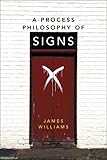A Process Philosophy of Signs / James Williams.
Material type: TextPublisher: Edinburgh : Edinburgh University Press, [2022]Copyright date: ©2016Description: 1 online resource (208 p.)Content type:
TextPublisher: Edinburgh : Edinburgh University Press, [2022]Copyright date: ©2016Description: 1 online resource (208 p.)Content type: - 9780748695003
- 9780748695027
- 302.23 23
- P99 .W57 2016
- online - DeGruyter
- Issued also in print.
| Item type | Current library | Call number | URL | Status | Notes | Barcode | |
|---|---|---|---|---|---|---|---|
 eBook
eBook
|
Biblioteca "Angelicum" Pont. Univ. S.Tommaso d'Aquino Nuvola online | online - DeGruyter (Browse shelf(Opens below)) | Online access | Not for loan (Accesso limitato) | Accesso per gli utenti autorizzati / Access for authorized users | (dgr)9780748695027 |
Browsing Biblioteca "Angelicum" Pont. Univ. S.Tommaso d'Aquino shelves, Shelving location: Nuvola online Close shelf browser (Hides shelf browser)

|

|

|

|

|

|

|
||
| online - DeGruyter Off to the Pictures : Cinemagoing, Women's Writing and Movie Culture in Interwar Britain / | online - DeGruyter Undead Apocalypse : Vampires and Zombies in the 21st Century / | online - DeGruyter Shakespeare and Continental Philosophy / | online - DeGruyter A Process Philosophy of Signs / | online - DeGruyter Introducing Criticism in the 21st Century / | online - DeGruyter Short Form American Poetry : The Modernist Tradition / | online - DeGruyter Katherine Mansfield and World War One / |
Frontmatter -- Contents -- Acknowledgements -- 1. Introduction: The Process Sign -- 2. The Independent Life of Signs -- 3. Biology and the Design of Signs -- 4. Process Signs and the Process Philosophy of Biology -- 5. The Sign -- 6. The Process Sign, Structuralism and Semiology -- 7. The Process Sign After Deleuze and Whitehead -- 8. The Process Sign is Political -- 9. Conclusion -- Notes -- Index
restricted access online access with authorization star
http://purl.org/coar/access_right/c_16ec
A new process philosophy of signs, where process becomes primary, and fixed relation secondary'Behind Red Doors - Signs, Process and the Political' - a post by James Williams on the Edinburgh University Press blogWhat is a sign? We usually think that it is a fixed relation: a red light signifies 'Stop'. In his bold new book, James Williams now argues that signs are varying processes: seeing the red light triggers a creative response to the question, Should I stop?Williams develops this new process philosophy of signs through a formal model, in contrast to earlier structuralist definitions. He draws on the philosophies of Deleuze and Whitehead, criticises earlier work on the sign in biology by Jakob von Uexküll, and connects to contemporary work on process in the philosophy of biology by John Dupré.The process model has wide applications in the arts, humanities and social sciences, and informs their critical debates with science. In defining the sign as essentially political, this radical definition of the sign opens up new possibilities for social and political critique."
Issued also in print.
Mode of access: Internet via World Wide Web.
In English.
Description based on online resource; title from PDF title page (publisher's Web site, viewed 02. Mrz 2022)


